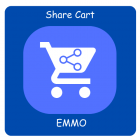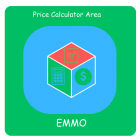Boosting Shopify Store Revenue: Essential Tactics for 2024

Boosting Shopify Store Revenue: Essential Tactics for 2024
To increase your Shopify store's monthly revenue effectively, focus on strategies that enhance customer experience, streamline checkout processes, and optimize for conversions. Here’s a breakdown of actionable tactics, plus insights into data-driven improvements for sustainable growth.
Table Of Content
- Why Shopify Stands Out in E-Commerce
- What Can You Really Earn With Shopify?
- How to Calculate Customer Volume to Reach Your Profit Goals
- Shopify Store Revenue Insights: A Practical Breakdown
- Why Shopify Dominates for E-commerce Startups
- Essential Steps for a Profitable Shopify Store
- Maximizing Monthly Revenue for Your Shopify Store
Why Shopify Stands Out in E-Commerce
The e-commerce landscape is continually evolving, with Shopify leading the way for businesses seeking simplicity and growth. Shopify enables businesses, from startups to large enterprises, to build and manage online stores with minimal technical skills. This advantage has positioned it as a preferred platform for many.
Shopify’s competitive edge is driven by five main strengths:
| Advantage | Details |
|---|---|
| User-Friendly Design | Shopify's easy-to-navigate interface makes it accessible to users without technical backgrounds. |
| Growth-Ready | Designed to scale with businesses, whether you're a startup or a larger enterprise. |
| App Integration | A vast app marketplace offers tools to expand store capabilities, from inventory management to chatbots. |
| Seamless Payments | Built-in payment processing simplifies transactions, reducing extra fees and technical setup. |
| Marketing Tools | Integrated marketing tools make it easier to reach and engage target audiences without third-party apps. |
What Can You Really Earn With Shopify?
For anyone stepping into eCommerce, the question of potential earnings with Shopify is key. Though factors like product types, pricing, and market approach shape income, it’s possible to get a clear idea of what average revenue looks like, standard profit margins, and how to align customer base goals to meet profit targets.
Typical Revenue Ranges for Shopify Stores
It’s tough to pinpoint a single number since Shopify stores span a wide range of markets and strategies. However, on average, Shopify stores generate about $5,583 per month globally. Keep in mind: individual results vary, and some stores earn significantly more or less.
| Shopify Store Revenue | Monthly Average (USD) |
|---|---|
| Typical Store | $5,583 |
| High Performers | $10,000+ |
| New/Smaller Stores | Below $3,000 |
Understanding Profit Margins
Profit margin is vital when evaluating revenue. Most Shopify stores see net profit margins around 10%, with top performers reaching up to 20% and others as low as 5%. Achieving a higher margin involves managing costs, optimizing pricing, and boosting sales.
How to Calculate Customer Volume to Reach Your Profit Goals
To determine the number of customers needed to hit your profit target, use this formula:
Target Profit÷(Average Order Value×Average Profit Margin)=Required Customer Count
Say your monthly profit target is $10,000. If each order averages $50, and you’re aiming for a 10% profit margin, the required number of customers would be:
10,000÷(50×0.1)=200 customers
Additional Considerations
Keep in mind, this formula gives a basic estimate. For a fuller picture, factor in:
| Factor | Description |
|---|---|
| Marketing Costs | Expenses related to campaigns or promotions |
| Customer Acquisition | The cost of gaining each new customer (e.g., ads, discounts) |
| Variable Costs | Any fluctuating expenses like shipping, packaging, or seasonal product adjustments |
Shopify Store Revenue Insights: A Practical Breakdown
Analyzing Shopify store revenue requires more than a single benchmark. Revenue patterns differ significantly by industry, store size, and business approach. By examining these factors, we can better understand what drives monthly revenue growth.
| Revenue Type | Description |
|---|---|
| High-ticket items | Higher revenue per order, often in electronics, luxury goods, and home furnishings |
| Low-ticket, high-volume | Higher sales volume drives revenue, common in apparel, accessories, and consumer goods |
| Subscription-based models | Recurring revenue from products like beauty boxes or meal kits |
Revenue Based on Store Size
- Small stores typically see lower average order values and shorter customer lifetimes.
- Medium stores often balance acquisition and retention strategies.
- Large enterprises leverage economies of scale for higher order values and increased revenue.
Additional Revenue Drivers
- Business Model: Revenue varies for dropshipping, print-on-demand, and wholesale due to operational differences.
- Marketing Investment: Ads and promotions can drastically impact sales.
- Consumer Behavior: Regionally influenced, consumer habits and purchasing power shape revenue trends.
Tip
To enhance your eCommerce store’s performance with Magento, focus on optimizing site speed by utilizing Emmo themes and extensions. These tools are designed for efficiency, ensuring your website loads quickly and provides a smooth user experience. Start leveraging Emmo's powerful solutions today to boost customer satisfaction and drive sales!
Why Shopify Dominates for E-commerce Startups
High-Performing vs. Average Shopify Stores: Key Revenue Insights
Average revenue numbers provide a base, but top Shopify stores perform leagues above the average. In fact, the top 1% of Shopify stores bring in around 80% of the platform's revenue. This stark difference shows a clear need for growth-focused strategies to help more stores close this revenue gap and capture a bigger share of the market.
| Store Type | Revenue Share (%) | Notes |
|---|---|---|
| Top 1% Stores | 80% | Major revenue contributors |
| Average Stores | 20% | Require strategic growth initiatives |
Niche Revenue Distribution: Which Products Sell Best?
Revenue potential varies greatly across niches. Categories like electronics, fashion, and cosmetics generally see higher revenue thanks to higher product values and large customer bases. On the other hand, niche-specific stores may report lower average revenue but often maintain stronger profit margins due to less competition and specialized products.
| Niche Type | Revenue Potential | Notes |
|---|---|---|
| High-Revenue Nichess | High | Electronics, Fashion, Cosmetics |
| Niche-Specific Stores | Moderate to High | Specialized products, higher margins |
Subscription Models: Building Stable Revenue Streams
A proven approach to stable revenue is the subscription model, which offers recurring products or services at discounted rates. Even if individual transaction amounts are modest, the regularity of subscriptions helps stores build a steady, predictable income stream over time. Subscription-based stores may see more reliable revenue than traditional one-time sales models, benefiting from customer loyalty and ongoing engagement.
| Revenue Model | Benefits | Notes |
|---|---|---|
| Subscription | Predictable, sustained income | Lower churn with loyal customer base |
Essential Steps for a Profitable Shopify Store
A successful Shopify store thrives on a few core factors that, when aligned, boost customer engagement and drive higher revenue. Key elements for store growth include targeted marketing, quality products, streamlined design, and excellent support. Let’s break down these essentials.
| Success Factor | Description | Why It Matters |
|---|---|---|
| Strategic Marketing | Uses SEO, social media, and email marketing tailored to the store's niche. | Increases visibility and customer loyalty. |
| High-Quality Products | Products meet needs and deliver on promises; quality control ensures positive reviews. | Encourages word-of-mouth, enhances reputation. |
| User-Friendly Design | Streamlined navigation from discovery to checkout. | Enhances user experience, promotes repeat business. |
| Superior Support | Quick, friendly customer service that solves issues efficiently. | Builds trust, turns issues into loyalty-building. |
- Strategic Marketing that Converts Implement marketing strategies like social media, SEO, and email campaigns with your target audience in mind. Tailoring these approaches drives traffic and encourages customers to come back. Any previous missteps? Use them as opportunities to improve engagement.
- Quality Products that Deliver Product quality impacts everything. When products meet customer expectations, positive reviews and referrals follow. Avoid prior mistakes by ensuring products align with customer needs, creating a lasting impression and fostering loyalty.
- Simple, Clear Store Design A well-designed store that’s easy to navigate keeps customers on the page longer. From first visit to checkout, customers want a seamless shopping experience. A complicated layout or navigation can push potential buyers away. Optimize design to retain engagement.
- Support that Stands Out Fast, efficient, and helpful customer support is non-negotiable. Quick responses and solutions show customers they’re valued, transforming issues into lasting relationships. Improve from past errors by refining support processes and listening to customer feedback.
Maximizing Monthly Revenue for Your Shopify Store
Increasing your Shopify store's monthly revenue is all about consistency and strategy. By focusing on data-driven marketing, optimizing conversion rates, expanding product offerings, and leveraging Shopify's integrations, you can boost revenue sustainably. Here’s a look at essential strategies:
Data-Driven Marketing: Understand and Engage
To truly understand your customers, rely on data. Analyzing customer behavior gives insights into their preferences, purchase habits, and the marketing channels that provide the highest return on investment (ROI). Use these findings to craft marketing messages that resonate, reaching the right audience at the right time with the right message.
| Marketing Tools | Key Benefit |
|---|---|
| Customer Analytics Platforms | Understand behavior & preferences |
| Understand behavior & preferences | Track & optimize channel performance |
| Personalization Apps | Tailor messages to individual needs |
Conversion Optimization: Make Your Site Work Smarter
Simple updates to your store can have a big impact on conversions. Speeding up site load times, improving navigation, and creating product pages designed to convert are all critical. Include clear calls-to-action (CTAs) and streamline the checkout process, ensuring the purchase journey is straightforward and effective.
Shopify Apps and Integrations: Enhance Functionality and Sales
Shopify apps and integrations are essential for building out your store’s capabilities. Whether for cross-selling, upselling, or streamlining backend processes, these tools enhance functionality and improve customer experience. Invest in the right apps to increase both the effectiveness and efficiency of your operations.
FAQs
Why is Increasing Shopify Revenue Important for Store Growth?
Revenue growth is essential for sustaining and scaling your Shopify store. It impacts your ability to reinvest in marketing, product expansion, and customer experience improvements.
How Can Data-Driven Marketing Help Increase Shopify Revenue?
Data-driven marketing helps identify customer preferences and optimize marketing efforts. By using analytics to understand customer behavior, you can craft targeted campaigns that improve engagement and conversion rates.
What Are Effective Ways to Optimize Shopify Store Conversions?
Simple tweaks like improving site speed, creating high-converting product pages, and streamlining navigation can boost conversions. Including clear CTAs and optimizing the checkout process also leads to higher conversion rates.
Why Should You Expand Your Product Line and Audience?
Expanding your product line and targeting a wider audience can lead to significant growth. This strategy allows you to reach new customer segments, enhancing both brand awareness and potential revenue streams.
How Do Shopify Apps and Integrations Improve Store Revenue?
Shopify apps and integrations enhance functionality, such as cross-selling, upselling, and customer management. These tools simplify operations and improve the customer experience, driving higher engagement and sales.
What Role Does Market Research Play in Shopify Store Growth?
Market research identifies new product opportunities and helps you understand customer needs. This knowledge enables more tailored marketing efforts and product offerings that align with your audience’s expectations.
What Are Best Practices for Maintaining a High-Converting Shopify Store?
Focus on user experience by maintaining fast load times, intuitive navigation, and optimized product pages. Regularly update content and run A/B tests on CTAs and page layouts to continuously improve conversion rates.
Where Can I Learn More About Shopify Revenue-Boosting Techniques?
Resources such as the Shopify Guides and Shopify Blog offer valuable insights and strategies to help boost store revenue.









